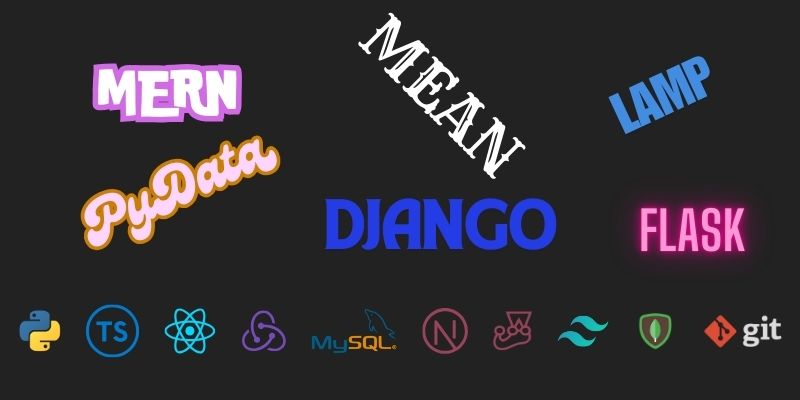When building modern web applications, various technology stacks offer combinations of tools that work well together to streamline development. Below are some common technology stacks similar to the well-known MERN and LAMP stacks, each offering distinct advantages based on project needs.
MEAN Stack
- MongoDB: NoSQL database for scalable, high-performance data storage.
- Express.js: Lightweight web framework for building robust APIs.
- Angular: Front-end framework for building dynamic user interfaces.
- Node.js: JavaScript runtime for server-side programming.
MEVN Stack
- MongoDB: NoSQL database for flexible data storage.
- Express.js: Web framework for building RESTful APIs.
- Vue.js: Progressive JavaScript framework for building user interfaces.
- Node.js: Server-side JavaScript execution.
JAMstack
- JavaScript: Used for dynamic client-side functionality.
- APIs: Serve as backend services or logic.
- Markup: Pre-rendered static HTML files for better performance.
LAMP Stack
- Linux: Operating system that provides stability and security.
- Apache: Web server for serving web pages and managing traffic.
- MySQL/MariaDB: Relational databases for structured data storage.
- PHP/Python/Perl: Programming languages for server-side scripting.
WAMP Stack
- Windows: Operating system for local development on Windows machines.
- Apache: Web server for handling web requests and serving web content.
- MySQL/MariaDB: Relational database for data storage.
- PHP/Python/Perl: Server-side programming languages.
LEMP Stack
- Linux: Operating system for stability and performance.
- EngineX (Nginx): Web server for handling web traffic and reverse proxying.
- MySQL/MariaDB: Relational databases for structured data storage.
- PHP/Python/Perl: Server-side languages for dynamic content.
MERN Stack
- MongoDB: NoSQL database for storing JSON-like data.
- Express.js: Back-end framework for developing web applications and APIs.
- React: JavaScript library for building dynamic front-end user interfaces.
- Node.js: JavaScript runtime for server-side development.
Django Stack
- Django: Python web framework for rapid development and clean design.
- PostgreSQL: Relational database system known for reliability and robustness (other databases like MySQL can also be used).
- Nginx: Web server for serving static content and handling traffic.
PERN Stack
- PostgreSQL: Relational database management system.
- Express.js: Web application framework for handling HTTP requests.
- React: JavaScript library for front-end development.
- Node.js: Server-side JavaScript runtime environment.
While the PERN stack isn’t purely Python, it's often paired with Python-based backend services.
FLASK Stack
- Flask: Lightweight Python web framework designed for simplicity and flexibility.
- Linux: Operating system for servers.
- Apache: Web server software.
- SQLAlchemy: Object-relational mapper (ORM) for managing database operations.
- Kubernetes: Container orchestration platform for automating deployment and scaling.
PyData Stack
- Python: Programming language widely used in data science.
- Pandas: Library for data manipulation and analysis.
- Numpy: Library for numerical computing in Python.
- SciPy: Library for scientific and technical computing.
- Jupyter: Open-source tool providing interactive computing environments (notebooks).
Each of these technology stacks has its own strengths, and the choice of stack depends on the specific requirements and goals of the project. Whether focusing on web development, data science, or scalable applications, there's a stack designed to optimize the development process.

